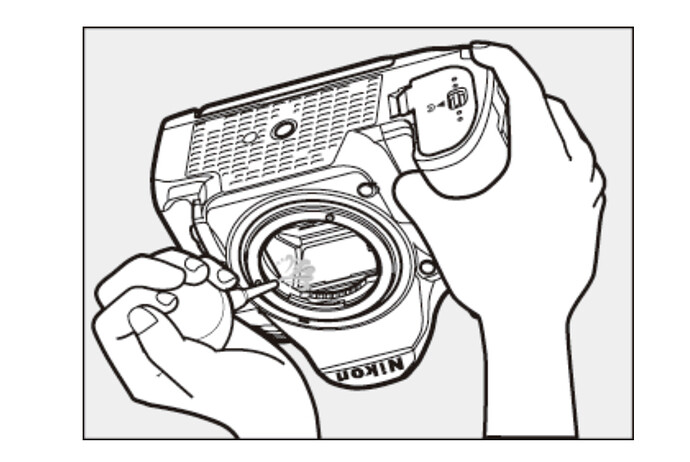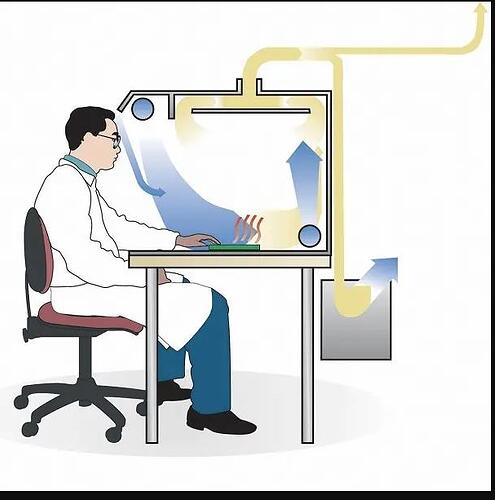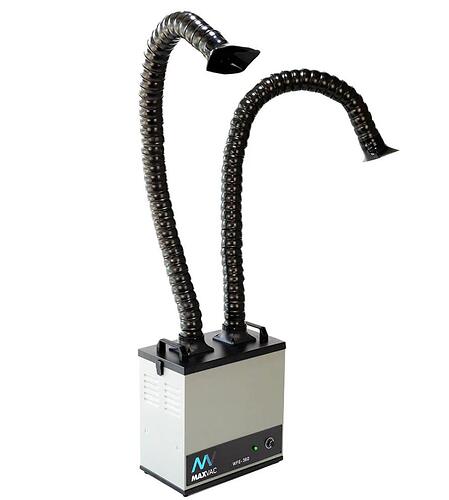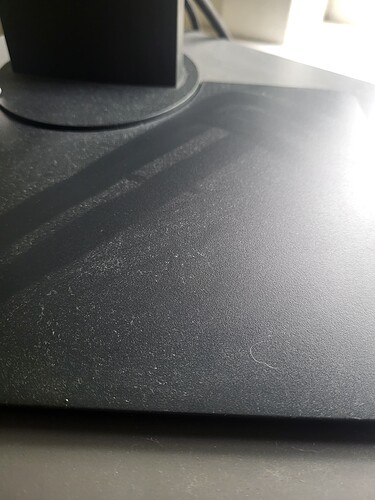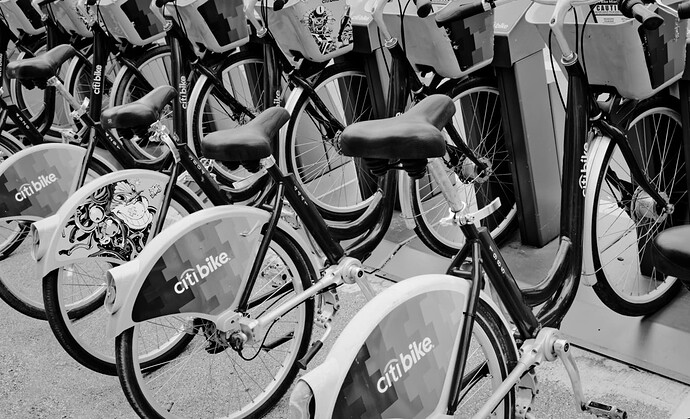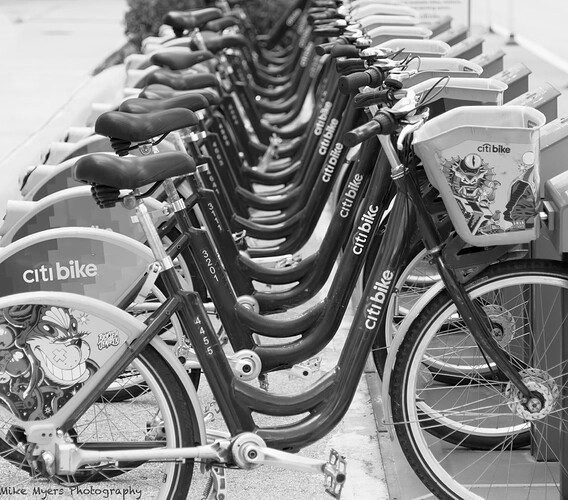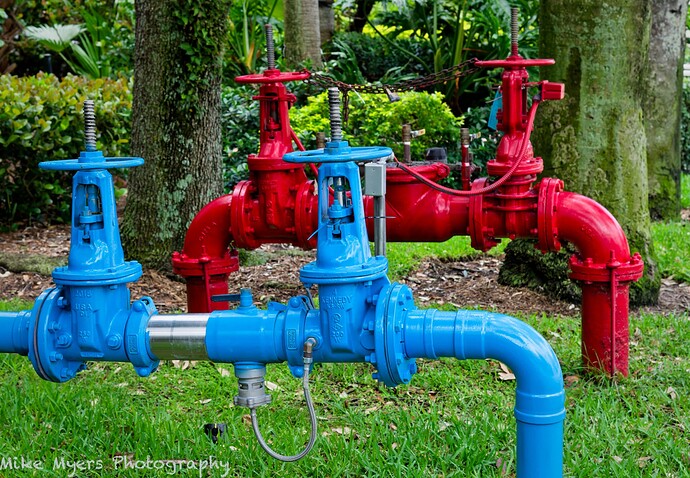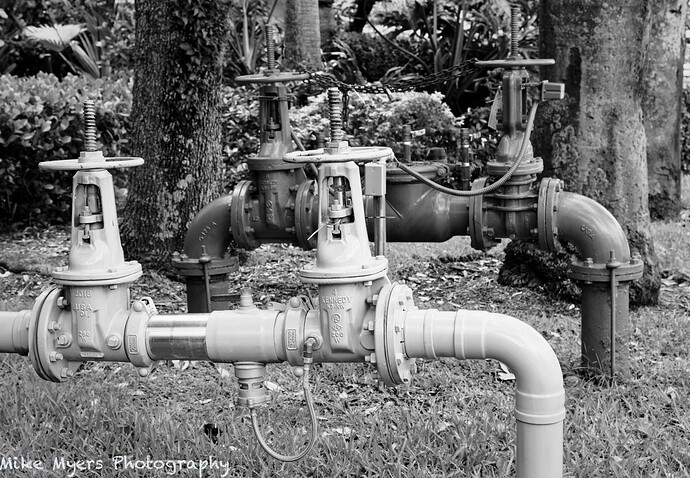In German, the manual says “hold the camera straight”, which can mean anything. Nothing about “base down”, but hey, what could I expect from a company using Google translate for their “Reference Manual”? And I still remember the oil-on-the-sensor debacle of the D600. To me, this company is neither trustworthy nor customer-friendly.
Maybe they sense your attitude?
Nikon has the same customer help number that they used when the D2 cameras were first coming out, 1-800-NIKONUX, and they have spent all the time I needed whenever I had an issue. They sent me three versions of the brand new D2h, and eventually sent me a good working camera. Each time they sent the whole package, with battery, charger, whatever, so I ended up with far more batteries than I needed. The first D2h I received was from the very first batch of these cameras that was shipped to B&H. With all the feedback, the D2h, and D2x were sorted out. Stupidly, I bought a D3, again out of the first batch being sent to B&H, but that camera was perfect. I should add that once I got a camera that was reliable, it did everything I wanted, and my editors were Pleased with a capital “P”.
If I’m away from home, and stuck, with a question, they are always cordial and helpful, and if they don’t have an immediate answer, they get back to me.
They were out-done by Leica recently - my M8.2 had blown pixels, and they had me send it back, evaluated it, and gave me the cost to re-map the sensor and fix the other issues they discovered. Then, at no additional charge, they “wrapped” my body in new leather (vulcanite?). I also can’t complain about Fuji - when I call them for help, they’re even more excited to talk to me about my X100F than I am - I would likely already have the newer X100z (or whatever it is) but thanks to some people making a big fuss about it on TikTok, I’ve read that you can’t find a new one for sale anywhere.
I dunno, holding the camera “straight”, as opposed to “upside down” or “aimed up/down” seems pretty obvious.
I buy Nikons because they seem to me to be the best. I have no desire to sell my Leica or Fuji cameras, nor my film cameras. Pretty silly about some of this - I even bought a second Nikon F4 because it came with a “data back” and. was priced so low. Once upon a time, for a long time, the F4 was my main camera, for work, for fun, for travel, for anything/everything. It replaced my F and F2 Nikons.
Oh well, back to reality. I just finished watching this Red Dot Forum video, live:
https://www.youtube.com/watch?v=OHvhm-tQVqA
If I still had a job, with a paycheck coming in, I would probably buy a Monochrom. @Joanna, if you watch this, and compare the examples, you might find it useful for when you’ve already decided to shoot in B&W, but it costs as much as a car! I’ll see if I can get similar results from PhotoLab.
You probably have no idea about how lucky you are to get no clear feedback about your own attitude, MIkeMyers. And also being blessed with the ability to just not paying attention about a lot of hints.
Need to send in an expensive camera there times until you get a working one might prove something about patience of American Nikon support, but as a proof of quality it falls rather short. Besides, it just confirms what I said about the company – I haven’t said anything about the support
The correct part of that sentence is “I dunno”. “Gerade” in German means just i.e. a straight line, a straight pole, direct way without a curve, there’s no orientation of that involved. “Gerade aus” = straight ahead. Even in your explanation out of the manual there’s no mention of “straight”, but why waste some thoughts about that?
Ice-cream? Nope. I know about the expand compress behaviour. And relative moist percentage that’s why you need conditioned compressed air and not a tire pump for instance.
About dust particals in the air taken in the airstream launched in your camera, i always changes lenses and clean the sensor in the garage just after a session of MDF cutting with a cut off saw . ![]()
What do you think a cleaning service uses? A compressed air nozzle in a conditioned room suction with hepa filters near by the workspot which we don’t have. So we need a workaround.
Normal cleaning is that bulb thing (which sucks local air in without any filtering by the way) and a new swipepad and the lenspen and two caps.(no need to clean if you let it laying around open wile and after cleaning)
About picking up dust which is floating in the air… When you want to clean the sensor you must first vacuum the room and desk and use static cleaning cloth to pickup remaining dust from the desk you want to use and wait 1 hour so the dust settles again If there is still any dust in the air. And don’t whipping up the pillows just before ![]()
Have a nice day.
Seriously? And I always thought, a day trip to the seaside on a windy day is the proper condition for crunchy sensor cleaning. But then, I don’t have a garage. Maybe the dust-bin after emptying the vacuum cleaner also works?
So, you do know about working place conditions. But the room is not sucked, actually the working space has a bit of over-pressure. Filtered air is pumped into the working space to keep the particles out of it.
No. The whole vacuuming is only to agitate dust particles for a much longer while than only one hour. In a bathroom, half an hour after a not-too-hot shower, th particles are saturated with moisture and no longer able to fly free in huge amounts. So, I prefer to clean the sensor my way and not the way you think it must be done as I see some flaws in it.
yes over pressed room to keep dust out and a room to change normal clothes in a clean full body and no other stuff is taken in. the air outlet is often in the ground not in the ceiling (hospitals use those for instance in there labs bin there often to repair stuff.)
The sucking hepa filter is on the workdesk to discard any dropped particals which arn’t traveling further down. (and takes fumes of your face when used.) many technical workspaces uses those set ups with or without any other room conditioning equipment.
or just this type:
I use often the kitchen countertop for cleaning my gear, good work light, nice work hight wile standing and cleaned much more often then the upper rooms (i see the dust now wile typing on every surface )
and if i have to wait until the bathroom is free with a 18 year old daughter… ![]()
No then it’s better to vacuum the livingroom (which is done every day because of cats and dog hair), (free creditpoints earned wile doing that and most kitchens are open connected with livingrooms so those have also every day clean actions multiple times per day.)
Then after a wile clean the topcounter with a moist cloth and just start.
Allright, this I haven’t considered ![]()
What didn’t come up so far: Are you using a sensor loupe or just peaking in with your sharp falcon eye? That is, if your daughter doesn’t take out the falcon to hunt some rabbits for lunch?
I don’t smoke when I’m sensor cleaning. And the camera is also not recording 8k stuff when the sensor is to be cleaned ![]()
Well, you’re probably right about that. Most people will wait until a brand new product is de-bugged, and the issues are corrected, before buying one. I got one of the ten first D2h cameras to arrive in the USA, and it took a while to get a “good one”. So what? I knew Nikon would take care of me, and they did, and eventually everything worked out. I also bought a new D70 right after it was released, and it died after just a few “clicks”. I also bought my Leica M8 camera before Leica figured out how to get it to work as a full-frame camera, and I still have it now - because of one of Leica’s “mistakes” it was sensitive to infrared light, which meant black clothing looked “purple”… but it was, and still is, my best camera for shooting in infra red light.
Buying anything that represents the newest technology is “risky”, and to me, that was acceptable risk, as I could simply continue on with my previous cameras, digital and film. The magazines were still happy, as I still got my photos, and it was enjoyable (to me) to be part of the new camera introduction. Nikon paid the costs, and I was “rewarded” with lots of brand new batteries from the cameras that were sent back - so when I got my D2x, I was all set. I guess I never learned my “lesson”, as I bought my new Nikon D780 as soon as I learned about it. So now, I’ve got the 780, along with my Df which I don’t use all that often, and I’m sure you feel they are all worthless as they still have mirrors. ![]()
Suggestion - instead of telling me how bad I am, why not post your own images here, processed of course in PhotoLab?
I guess they thought it was obvious, with no further explanation of a drawing attached. I’m surprised this even bothers you. Generally speaking, that is how we all hold our cameras 99% of the time.
I suspect you’ll eventually learn the difference between “poor quality control” and “new design defects”, and being much smarter than I am, you will wait until a product is proven before investing your own money in buying one. Eventually, with a new design, people have to figure out if a new design for a camera is actually an improvement.
Me too, for the same reasons. Also, also much better ventilation than my workshop (a converted very large closet).
My predicament is that my computers are against one wall of my living/dining room, meaning there are huge windows all around letting in sunlight unless I close the blinds. I enjoy editing more at night, not having to deal with the daylight messing up my calibrated display - which is one of the first things @Joanna ever got me to do, as I eventually understood and realized I the images I was uploading were not looking to other people, the way they looked to me. I’ve now got my ASUS 27" calibrated display, and an old iMac for a second display, which changes brightness during the day, meaning I don’t use it for editing images.
Dust - big problem. I bought two large Winix PlasmaWave air cleaners, which help a lot. Dust was my biggest problem when I was scanning 35mm negatives.
I’m still intrigued by creating a b&w image properly, and with no mistakes. I took this photo recently, and my mind had something pictured for what to do with it, but that didn’t work in color, and neither did it work in b&w. I tried again a week or so ago, again with no success. On a whim, I tried it this morning, ignoring what I had intended to create, and rotating the image in a way I never imagined. Then some possibilities woke up, and became fun to work with. There’s only a little contrast added, to make the image look better on my screen. It’s certainly not a “photojournalist” image, as I’d be yelled at by those guys, for multiple reasons. It’s maybe an image that @Joanna and @Wolfgang might even accept. It “works” perfectly for what my goal was, to show this line of bicycles in an interesting and perhaps artistic way, without making any errors along the way.
It was created using my Df, with my Nikon 28-70 mounted, as I was just going for a walk, not expecting to find anything exciting. It’s the last of only 5 photos I kept from that day, the other keepers being of trees and plants.
I was thinking of all the recent advice I have been given. Looking over the image, I mostly made adjustments to the “Tone Curve” every time I wanted to change the looks.
DF1_3204 | 2023-03-19.nef (34.1 MB)
DF1_3204 | 2023-03-19.nef.dop (18.9 KB)
For those of you who know so much more than I do, and even for those who think I’m hopeless, other than having composed the image better in my camera, what could I have done to improve this image?
no effort to guide the viewer’s eye – again not worth to download
but as long you like it (to post it here) …
Well, thank you! I may never get an image that satisfies you, but that wasn’t my goal, which was processing the image properly in PhotoLab. That alone is progress for me.
You are correct - I never even considered guiding the viewer’s eye, and if I had done so, I have no idea where I would guide the viewer’s eye to. I think all the bicycles make a “pattern”, and that “pattern” was the heart of the photo, and what I was thinking about during editing.
I went for a short walkabout with the D780 today - will check out those results this evening. I even tried to capture a different view of the same bicycle stand. Maybe shooting from a different angle will accomplish your suggestion of “drawing the viewer’s eye into the image”. With any luck, I’ll complete that this evening.
As @Wolfgang says, the composition is not that great but I thought I would just share an alternative B&W treatment. Using my favourite Fuji Acros 100 film, Smart Lighting, an orange filter and a different Tone Curve…
DF1_3204 | 2023-03-19.nef.dop (50,1 Ko)
I certainly prefer your version over mine - the way you changed the shades (because of the orange filter???) your version fits together much nicer. The .dop is copied over, so I can study how you did it - especially the tone curve, which is opposite compared to what I did.
Looking at your version now - where does it show that you used the orange filter? Shouldn’t it be under “Color Rendering”? Until now, I’ve never tried to use a color filter… how is this done?
I’ll post my newer image later tonight. It definitely “leads the viewer’s eyes into the image”, but it still has some rough edges to be fine tuned.
Here goes - it does what @Wolfgang suggested, but it reminds me of looking into a trick mirror…
I think I dis-like it, as it makes me feel uncomfortable looking at it. It doesn’t look real, it looks like something out of a bad dream.
First time I’ve gone into the HSL tool, while viewing the image in B&W on my screen, and adjusted the blue color on the bike frames.
I opened the lens pretty wide, as I only wanted the closest bike to be in focus. I got what I wanted, but now I have second thoughts.
Long before Wolfgang said what he did, I took several different photos from different angles, then took this image from slightly different viewpoints. I did get what I wanted (or so I thought at the time). Tonight, I kept cropping away parts of the image to keep it “focused” on the central part of the image.
It bothers me that there is something “disturbing” about this latest version. Maybe it works too well?
780_0733 | 2023-05-07.nef (30.3 MB)
780_0733 | 2023-05-07.nef.dop (18.9 KB)
Just wondering if you ever got your question answered.
I’m wondering about what you wrote, which I quoted. Even if you do need to manually clean the sensor, I’ve never read about anyone using a suction device to do so. Presumably you don’t want anything to touch the sensor. Seems to me that unless the dirt is really stuck in place, the hand-held “rocket blower” is the ideal tool, and with the lens opening facing down, once the dust is dislodged, it should fall down and out of the camera.
BUT…
My D780 seems to have the same settings as your D850. It came from the factory programmed to do clean the sensor at Startup and at Shutdown. To me, that means that if dust does get on the sensor, as soon as I turn the camera off, the sensor cleaning will get rid of it long before it gets “stuck” in place.
@Joanna, if you’re seeing this, is this the way your D850 is configured?
Aha! Figured out how you did it.
I started here:
https://forum.dxo.com/t/black-and-white-conversion-color-filters/11596
…which sent me to “DxO FILMPACK”, and found the section for filters, with your orange filter listed.
Now that I understand HOW you did it, I will try it on my own, maybe with a red filter for a black sky. … done! Works just like if I was shooting film! Thank you again.
PhotoLab is starting to be more and more enjoyable. Scary enjoyable.
A little knowledge is a dangerous thing.
Sadly, all of this would be useless if I ever buy a Monochrom camera - if I do that, I’m back to using real filters again, which fortunately I kept from a lifetime ago.
Sorry for the diversion - between so many of you in this forum presenting unknown features, and me being excited about trying them, this is wonderful!
Oh, and don’t pay any attention to the above image - I just wanted to test the red filter idea. Photo is no better than it was before, but it had a blue sky.
I went out to buy bagels a few days ago, and look for things to photograph while on my walk, or perhaps it was more like I wanted to go “hunting” with my D780, and figured I’d get the bagels at the same time. Regardless, I had no idea of what I wanted to photograph - I was just “hunting” for something that intrigued me. I noticed these two blue and red water pipes, and they seemed interesting. I eventually found a viewpoint with an acceptable background, and deliberately focused on the closer pipe, setting the aperture so the rear of the photo would be less sharp.
Using the PL tools as I’ve recently learned how to use them, I eventually got exactly what I saw, and the photograph I wanted. On a whim, I figured I would also try B&W. That was more difficult, but I’m now puzzled as to which version is “better”. The obvious answer was color was better, as that’s why I noticed the photo to capture it, but looking at them now, the non-color version is something I would prefer to hang on my wall.
I’m beginning to understand why @Joanna and @Wolfgang seem to prefer B&W images. Maybe they leave more for my imagination to deal with - the color version just shows blue, red, and green. The details are there, but my brain doesn’t really notice them - while in B&W, my eyes enjoying the whole image more, because there is “more” that I see than just three colors.
780_0723 | 2023-05-07.nef (29.8 MB)
780_0723 | 2023-05-07.nef.dop (30.2 KB)
Mike, you are interpreting way too much!
This afternoon I messed around with your file
( unfortunately you didn’t fully photograph the first bike )
to find out, what might be interesting.
.
VC1 → 780_0733 2023-05-07.nef.dop (75,4 KB)
the Blue City Bike
BTW – the 24-120mm / F4 is not so well suited, when to capture something with a small(er) field of view with a shallow depth of field. → In these cases I use a real long focal length or go with a prime, that can open really wide.
(ed)
